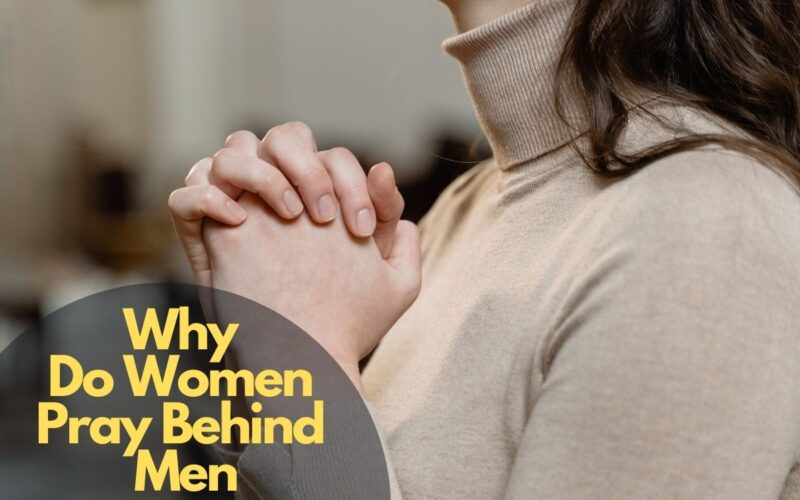There are several reasons for this question ”Why Do Women Pray Behind Men?” Prayer is a significant aspect of religious and spiritual practices across various cultures and traditions. In many religious settings, it is common to observe women praying behind men during communal prayer gatherings. By understanding the rationale behind this tradition, we can gain insights into the diverse beliefs and customs surrounding gender roles and spirituality.
This article aims to explore the reasons behind this practice and shed light on the historical, cultural, and religious factors that contribute to Why Do Women Pray Behind Men?
Why Do Women Pray Behind Men
One of the reasons for women praying behind men is the desire to preserve modesty and maintain a focused spiritual environment. The practice of women praying behind men can be seen as a reflection of historical power dynamics and cultural norms. In many societies, gender roles and expectations have been deeply ingrained for centuries.
These traditional norms often extended to religious spaces, where men were given prominent positions of authority and leadership. Understanding the practice of women praying behind men requires considering the historical context, theological, and cultural influences that have shaped religious traditions.
Historical Perspectives:
Abrahamic Traditions
In Judaism, the separation of genders during prayer emerged in the late Second Temple period (536 BCE – 70 CE) influenced by Greco-Roman social norms. In early Christianity, similar practices appeared, with designated areas for men and women in churches. The concept of male leadership also developed, shaping prayer practices.
Islamic Context
In Islam, the practice of women praying behind men during congregational prayers is based on interpretations of hadiths (sayings of Prophet Muhammad) and juristic rulings. Some scholars emphasize modesty and maintaining focus during prayer, while others highlight the historical context of tribal leadership structures.
Theological Interpretations:
Focus and Piety
Proponents of gender separation in prayer argue for its role in promoting focus and piety during religious rituals. They believe it minimizes distractions and allows individuals to fully immerse themselves in prayer.
Leadership and Roles
In some faith traditions, the positioning during prayer reflects designated roles and leadership structures within the religious community. This interpretation, however, has been challenged by arguments promoting gender equality in religious spaces.
Cultural Influences:
Social Norms and Traditions:
-
Respect and Modesty: In many cultures, the separation of genders during prayer reflects deeply ingrained notions of respect and modesty. This separation may be seen as a way to preserve privacy and maintain decorum within the sacred space.
-
Social Hierarchies: In some traditional societies, gender roles and social hierarchies are reflected in the positioning during prayer. Men may occupy leadership positions within religious communities, leading to their placement at the front.
-
Cultural Interpretations of Texts: Religious texts like the Quran or the Bible can be interpreted through the lens of specific cultural contexts. These interpretations, influenced by local customs and traditions, may shape how gender separation is practiced in religious ceremonies.
Regional Variations:
-
Arab World: In the Arab world, cultural norms concerning social interaction and gender segregation often influence prayer practices. Women may pray in designated areas within mosques or even at home to maintain privacy and respect cultural expectations.
-
South Asia: In South Asia, cultural practices like the veil or purdah, emphasizing female modesty, may be reflected in the separation of genders during prayer. This separation may be viewed as a way to ensure women’s comfort and security in shared religious spaces.
-
Indigenous Communities: In some indigenous communities, gender roles and spirituality are intertwined. Women may have distinct roles in religious rituals and ceremonies, influencing how they participate in prayer alongside men.
Conclusion
The practice of women praying behind men is rooted in historical, cultural, and religious factors. It reflects traditional gender roles, the preservation of modesty, and the desire to maintain a focused spiritual environment. While this practice may vary across different religious traditions, it is important to approach it with respect and an understanding of its significance within specific contexts.
By recognizing the diverse beliefs and customs surrounding gender roles and spirituality, we can foster inclusivity, respect, and appreciation within religious communities.






